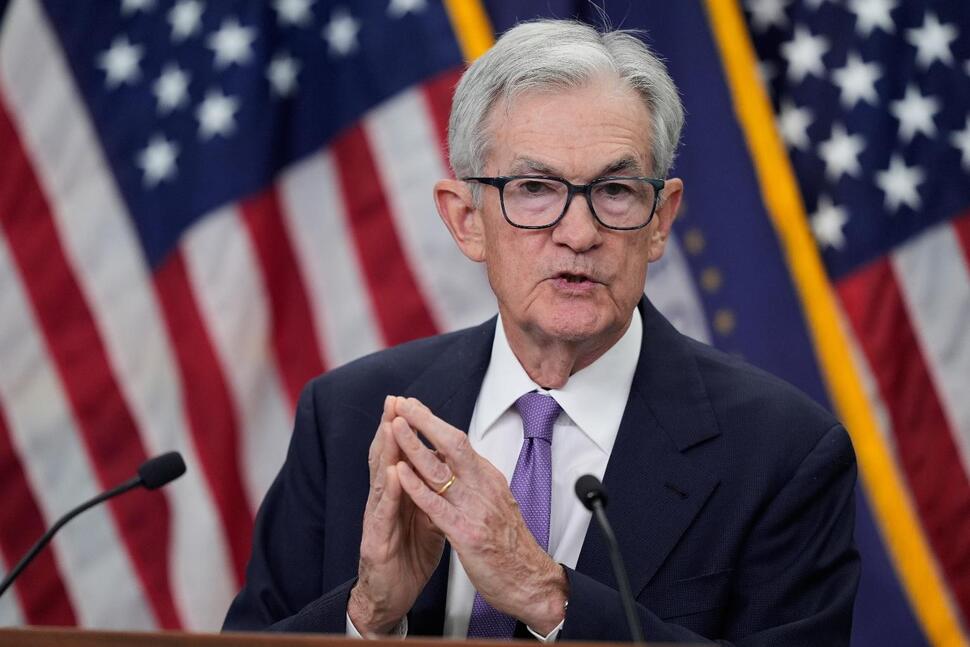Fed Cuts Rates for the Second Time This Year
The quarter-point cut follows a similar move in September.

Federal Reserve Chairman Jerome Powell speaks at a news conference after the Federal Open Market Committee meeting Wednesday, Oct. 29, 2025, at the Federal Reserve Board Building in Washington. (AP Photo/Manuel Balce Ceneta)
Acknowledging “elevated” uncertainty about the economy, the Federal Reserve on Wednesday lowered interest rates by a quarter point for the second consecutive month.
The widely expected move comes as the Fed operates with limited economic data because of the federal government shutdown and a need to balance steadying a wobbly labor market with fighting inflation.
“Available indicators suggest that economic activity has been expanding at a moderate pace,” the Fed said in a statement. “Job gains have slowed this year, and the unemployment rate has edged up but remained low through August; more recent indicators are consistent with these developments. Inflation has moved up since earlier in the year.”
The Fed said it “is attentive to the risks to both sides of its dual mandate and judges that downside risks to employment rose in recent months.”
All but two members of the Fed’s monetary policy committee voted for the increase, with new governor Stephen Miran preferring a 50-point cut and Kansas City Fed President Jeffrey Schmid wanting to leave rates unchanged.
While there was near certainty of a cut at this week’s meeting, market odds remain high for another one in December, which some observers believe may be overly optimistic.
The Fed’s job “is getting more difficult with each passing day,” says Gene Goldman, chief investment officer at Cetera Investment Management, who adds that “aggressive rate-cutting is not a given.”
Speaking to reporters after the announcement, Fed Chairman Jerome Powell acknowledged that there was a vigorous discussion among policymakers over the future path of interest rates.
“In the committee’s discussions at this meeting, there were strongly differing views about how to proceed in December,” Powell said. “A further reduction in the policy rate at the December meeting is not a foregone conclusion – far from it.”
Even though inflation is currently running 3% annually, well above the Fed’s 2% goal, there have been signs that some of the driving factors behind recent price increases are moderating. The Fed rate cut will likely lead to modestly lower borrowing costs for consumers, as rates on auto loans, credit cards and mortgages dip.
On Tuesday, the S&P Cotality Case-Shiller Home Price Index showed the annual pace of growth in national home prices slowed in August, continuing a trend that goes back seven months. “The U.S. national index rose by 1.5% year-over-year, the slowest pace of annual home price appreciation since July 2023,” said Lisa Sturtevant, chief economist at Bright MLS.
Meanwhile, mortgage rates have fallen to 6.2% for the benchmark 30-year fixed rate loan – down from the 6.8% level of June. Zumper’s national rent index released Tuesday showed flat or declining rates for the fourth straight month, with the median cost of a one-bedroom unit falling 0.4% in October to $1,511.
The National Association of Realtors said on Wednesday that pending home sales were unchanged in September and are down 0.9% year over year.
“Contract signings matched the second-strongest pace of the year,” said Chief Economist Lawrence Yun. “However, signings have yet to fully reach the level needed for a healthy market despite mortgage rates reaching a one-year low. A record-high stock market and growing housing wealth in September were not enough to offset a likely softening job market.”
As for the labor market, private surveys suggest firms are still hiring, but at a modest pace. “There are pretty few signs that it’s cracking,” says Tom Garretson, a senior fixed income portfolio strategist at RBC Wealth Management.
Increasingly, economists see a bifurcation in the economy, with lower- and middle-income consumers expressing concern as higher-earning Americans continue to spend, bolstered in part by a buoyant stock market.
“Interest rates are at the lowest level since late 2022,” said Heather Long, chief economist at Navy Federal Credit Union. “This will provide some relief for the millions of Americans who are struggling with credit card payments and personal loans, but slightly lower rates probably won’t be enough to stop more layoffs.”
“The middle class remains worried about job losses,” Long added. “The Fed acknowledges the ‘downside risks’ to employment and is likely to cut again in December as companies keep cutting headcount before the end of the year.”
